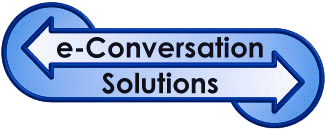Deliver what your viewer wants to hear, not what you want to say.
Good listeners make good salespeople. It’s hard to understand someone’s needs without listening.
So, the question is: Is your website and social media listening – or telling? Here are a few points to ask yourself about your online presence.
What are the Top 5 questions that your customers and prospects are asking? Are the answers on your website? While having the answers is important, it is also essential that you post the questions.
Why the question? First, the number one driver of search optimization is word match. With more people simply typing a question into a search engine, matching that question on your website will help your content rank well, and possibly be selected.
If you are posting to Facebook, Twitter, LinkedIn, etc., some of the best content to post are answers to those top questions.
Next, think of two questions that you would like your customers to ask you, but they don’t. For example, for bankers, one of the top questions that people ask is about rates. So if you are a bank, you should have a link to answer that question.
However, many bankers would like a business customer to ask them, “How can you, as my banker, help me grow my business?” This is a great question. Think about how interesting the answer might be, and how it could help create some differentiation between you and other bankers.
When designing your home page, think twice before leading with the obvious answer. Most visitors already know what your business does. Consider showcasing a benefit rather than a feature.
For example, if your company was The Widget Company, your visitor already knows you make widgets. So rather than featuring your widgets, feature some products that your widget is integrated into. This answers another question: Does this widget manufacturer supply to products like mine?
Suppose that you offer services. You can start out with a list of services that you provide. That list answers an obvious question. But consider showcasing some pictures of your customers. Pictures of your customers address the question, “Do you work with people like me?”
Featuring items such as logos of companies that you work with or testimonials also can help answer key visitor questions.
Think about benefits that make you different as opposed to ones that are obvious. For example, as a widget maker, rather than talking about high quality (everyone probably says that), you may want to talk about quick turn-around or design assistance.
When a local car wash states “we care” does that imply that other car washes don’t care?
When you build a content page for your website, consider the next question that your visitor will ask. Provide links based upon the questions or information that they are looking for.
Please note: You can’t assume that most of your visitors will start on the home page. Think about how every page can tell a stand-alone story, and lead the visitor to the next step in the buying process.
So, while you may want to tell your story, you actually need to tell the story that your customers and prospects want – and need – to hear.
What story does your home page tell? Is there content that you need to change?
This blog entry was first posted in Business Unplugged. Here is that link.





